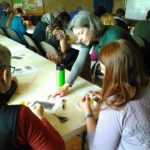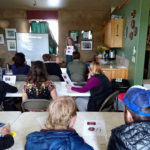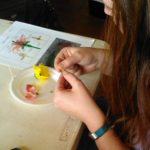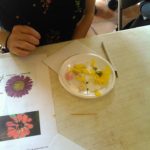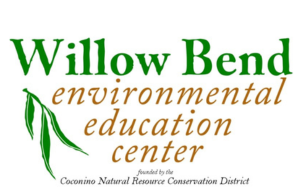Plants and Pollinators Workshop
Blog post by Jenny Skene, Willow Bend volunteer and workshop attendee
Which flowers should you plant to attract bats or avoid wasps? What are the main threats to pollinators and how can we help? Ever heard of nectar robbers, sentry milk vetch or hexose?
These were just a few of the topics covered in the plants and pollinators workshop held on Saturday, February 11th through a yearly winter partnership between Willow Bend and the Arboretum at Flagstaff.
Dr. Kris Haskins, Research Director from the Arboretum at Flagstaff, led the workshop and shared her expertise on pollinators, their natural history, human interference and what we can do with our gardens now to encourage them. Participants learned what nectar types and colors of flowers different pollinators prefer; dissected common flowers with toothpicks; and designed their own pollinator gardens with advice from experts.
Here’s a few fun facts from the workshop:
- Different plants are pollinated by bats, bird, beetles, bees, spiders and mammals – even including one Australian marsupial that evolved together with its plants. Other methods include splashes of rain in the rainforest, a windy day or human intervention with a fine paintbrush.
- Some pollinators can also be ‘nectar robbers’, animals that steal the nectar higher up the flower without serving their purpose by collecting the pollen lower down.
- Bees, monarch butterflies and other pollinators have suffered dramatic population decrease in recent years due to conversion of wild land, pesticides and climate change – but there are lots of projects trying to reverse the trend, see some below.
- Bats like white, cream and dull green flowers, birds like red and orange ones, while bees like most bright colors – blue, purple, pink and yellow flowers.
- To attract and support more pollinators, try planting flowers of varying heights and flowers that bloom at different times of year. Make sure they are native plants (check out the Arboretum’s plant sales in the summer) and try adding other features to your garden, like a shallow water dish or fruit feeders. Even an old log can help!
And here’s a few fantastic projects you can get involved with:
Million Pollinator Gardens: Register your garden to be one of a million spaces to support pollinators.
Monarch Watch: Plant some of the native Flagstaff milkweed species (showy, horsetail, poison or antelope horns) and register your garden as a Monarch Waystation.
Pollinator Partnership: Work on your garden and join events for Pollinator Week 2017 from 19-25 June and check out the website for more tips on how to support pollinators in your area.
Xerces Society: Join the Xerces Society for invertebrate conservation and learn more about all the tiny life forms in your garden.
And don’t forget to check out the Arboretum at Flagstaff website for their upcoming events and summer plant sales, where they can advise you about local plants. If you’re interested in volunteering, their docent training program starts in March for 2017.
